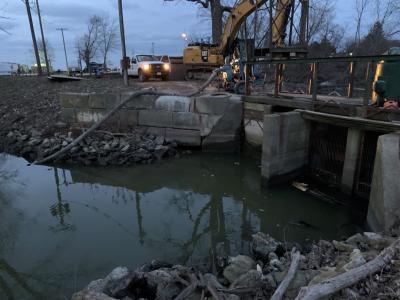Home to the Magee Marsh Wildlife Area (MMWA), Western Lake Erie is among the most ecologically productive and biologically diverse areas of the Great Lakes. Located within the Maumee Area of Concern (AOC), the MMWA is owned and managed by the Ohio Department of Natural Resources – Division of Wildlife as a haven for diverse and productive plants and aquatic invertebrates, migratory and nesting birds, fish, mussels, and other wildlife. Millions of waterfowl, shorebirds, songbirds, and raptors migrate through the Western Lake Erie Basin, where many find shelter and food in these coastal wetlands.
Despite their conservation and habitat values, less than 5% of the original Western Lake Erie coastal wetlands remain, and most of these wetlands are maintained behind dikes to prevent additional habitat degradation. Diked wetlands and the associated infrastructure allow Division of Wildlife managers to better manage invasive species like Phragmites, purple loosestrife, and invasive carp, which degrade the plant communities of coastal marshes. Having the capacity to manage water levels also provides the opportunity to manage for various species that may depend upon different water depths and vegetative conditions.
To address the AOC’s habitat impairment, the Division of Wildlife used GLRI funds to improve the management of this vital habitat by updating the MMWA main distribution pump and replacing the two main water control structures that feed the largest portions of the wildlife area. These key improvements have contributed to the following achievements.
- Improved wetland management on 1,000 acres of coastal wetlands;
- Provided passive management options that will improve passage of native fish into these coastal wetlands;
- Reduced the threats of nonnative, invasive plants and animals using water level management; and
- Improved cost-effectiveness and sustainability of management on these regionally important coastal wetlands.
The long-term project outcome is to improve fish habitat and populations in the Maumee AOC. Additionally, the improvements to the wetland will increase protection from the wind and wave energy that can erode these systems during high lake levels. Numerous rare, threatened, and endangered species will benefit from these improvements including Blanding’s turtle, Kirtland’s warbler, Piping Plover, and the Red Knot. The marshes will also absorb excess nutrients abundant in the watershed, improving water quality.



